Natural Deodorant Without Baking Soda
This homemade natural deodorant without baking soda is a more gentle option that is a great choice for those with sensitive skin. This recipe contains zinc oxide making it super effective against body odor!
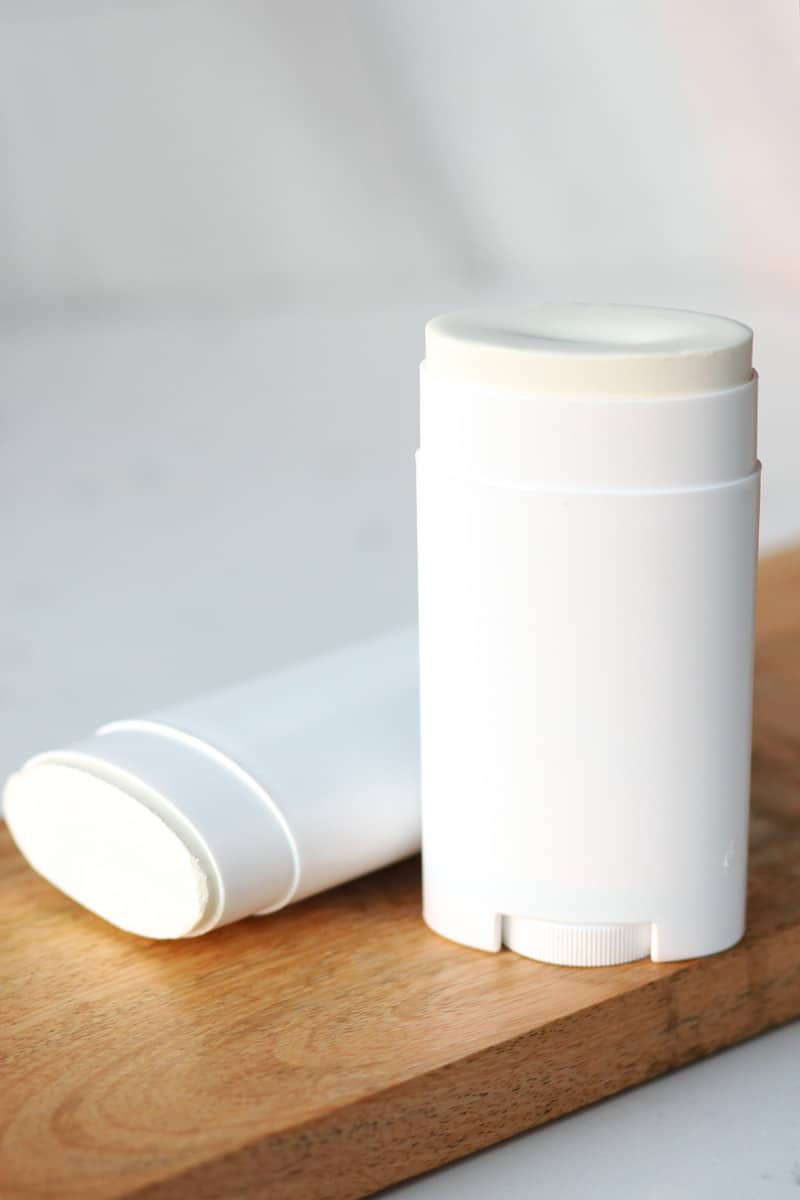
A few years ago I would never have guessed I’d be making my own deodorant. But having pre-teen daughters, has really made me rethink all of the products I’ve been using for my personal hygiene now that they are starting to use them too.
It’s kind of scary when you realize you’ve been applying chemicals and substances that are suspected of leading to breast cancer to your underarms day in and day out without even realizing it.
Deodorant isn’t one of those things we can just opt out of, right? For the sake of everyone around us, we need a natural substitute that actually does the job!
Most homemade deodorant recipes call for baking soda because it’s known for being a natural deodorizer (it’s the main ingredient in my laundry scent booster for that reason). But baking soda has a high PH level, so it can irritate the sensitive skin skin under the arms.
This deodorant recipe uses another powerful but less harsh deodorizer in place of baking soda. Zinc oxide actually kills both types of bacteria that cause body odor. Yeah, it doesn’t just masks the smell like some deodorants, it obliterates it.
So you better believe this stuff does the job!
This post contains affiliate links, which means I make a small commission at no extra cost to you. Get my full disclosure here.

Why You’ll Like Making natural Deodorant without baking soda
all natural
Store-bought deodorants often contain a number of harmful ingredients that can lead to health issues:
Parabens that can interfere with your body’s estrogen levels. Over time, study’s have shown that applying commercial deodorants that contain parabens every day can lead to breast cancer.
Aluminum is another ingredient that has been linked to the growth of cancer cells in and around the underarms and upper region of the breasts.
Phthalates are found in most cosmetic products including deodorants. These compounds can lead to infertility in men and possibly even cause birth defects when used by pregnant women.
Making your own deodorant at home, you can avoid these toxic ingredients and health concerns. This recipe is made with completely natural ingredients like beeswax, shea butter and zinc.
gentle for sensitive skin
Most homemade deodorant recipes call for baking soda because it’s such an effective deodorizer. It also helps to give deodorant the right consistency when applied.
The only problem with using baking soda on the skin is the fact that it’s very alkaline and can affect the ph level of your skin. This can lead to dry skin and itchy rashes, especially for those with sensitive skin.
This DIY deodorant uses zinc oxide and arrowroot powder in place of baking soda. Both of these ingredients are gentle on the skin, making this recipe a great option for sensitive skin.
easy to make
Don’t be turned off by the list of ingredients. Homemade deodorant is actually really easy to make! All you have to do is melt the beeswax and oils together, add the powdery ingredients, and pour the mixture into your deodorant tube. Simple!

not greasy
The beeswax and arrowroot in this recipe keep the deodorant from leaving your skin feeling greasy. Because having oily stains on the underarms of your shirts is definitely not a good look!
really works!
Most importantly, this homemade deodorant works! The zinc oxide kills both types of odor causing bacteria that are found in our armpits: Corynebacterium spp. and Staphylococcus spp.
Arrowroot powder helps to absorb sweat and mask odors, and the other ingredients are soothing to the sensitive skin under your arms.
What You Need for this natural deodorant recipe without Baking soda:
INGREDIENTS:
- fractionated coconut oil – aside from being a wonderful moisturizer, coconut oil is known for it’s antibacterial ad antifungal properties. It can help fight against yeast infections as well.
- beeswax pellets – beeswax is mostly included in this recipe to keep the deodorant solid and non-greasy. But beeswax is also beneficial to use on your skin.
- shea butter – shea butter is my favorite moisturizer because it is thick, soothing and doesn’t leave my skin feeling greasy.
- zinc oxide – the main active ingredient in this deodorant recipe, zinc oxide is known for it’s antibacterial properties and amazing deodorizing capability! It’s important to use non-nano zinc oxide since it has larger particles that won’t be able to absorb into your blood stream.
- arrowroot powder – because this recipe doesn’t call for baking soda to absorb sweat and hide odors, I use arrowroot powder which is a more gentle substitute that works about the same way.
- essential oils (optional) – you can leave the essential oils out of this recipe if you have extra sensitive skin, but adding a few drops of a gentle oil you love will give your deodorant a lovely scent and depending on the oil you use, it can have added benefits for your skin.
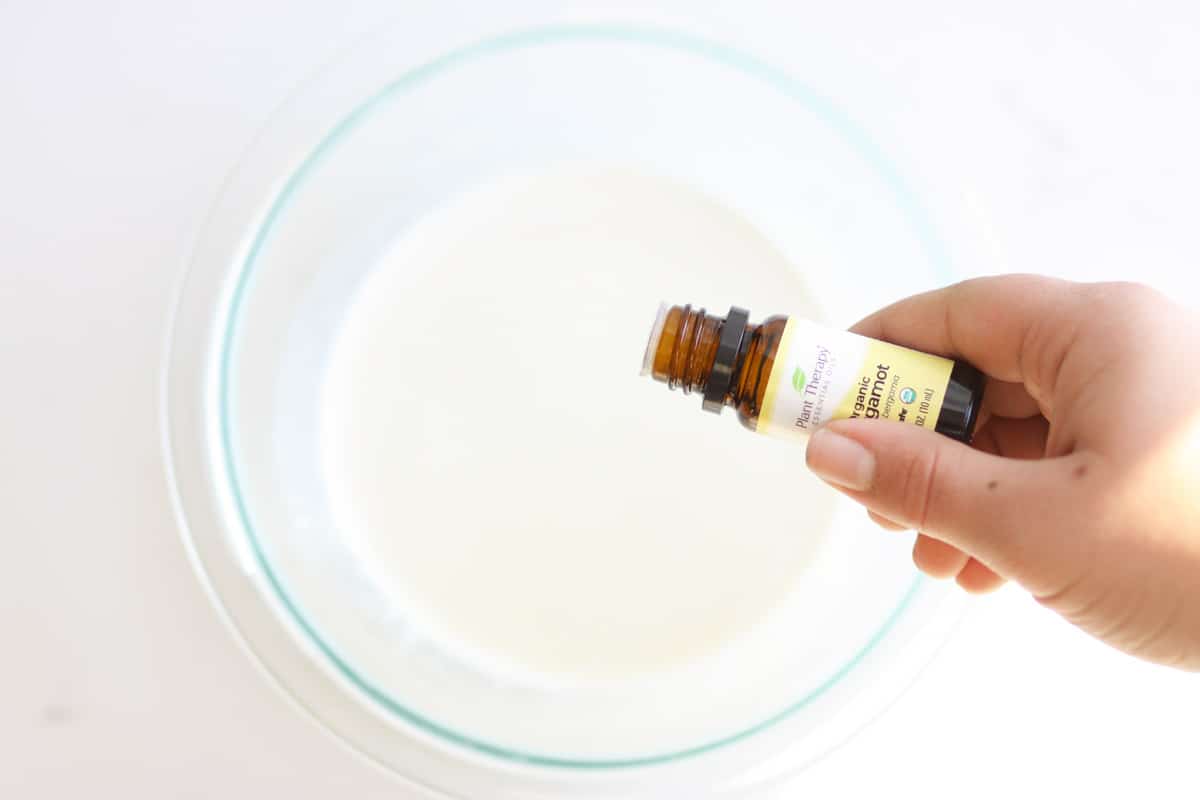
supplies:
- double boiler – or just put the ingredients in a heat safe bowl over a saucepan with a little water in it.
- deodorant container – either clean out and reuse old deodorant tubes or buy a new pack of empty deodorant tubes for this recipe.

FAQ About natural deodorant Without Baking Soda:
is it safe to make your own deodorant?
Making your own deodorant from a recipe that uses only natural ingredients is not only safe but a much better option than using most conventional deodorant that often contains chemicals that can lead to serious health conditions.
does natural deodorant actually work?
Not all natural deodorants are really effective at eliminating body odor. It all comes down to the ingredients used to make them.
This homemade deodorant uses zinc oxide to actually kill the two types of bacteria that cause body odor. And arrowroot powder to absorb sweat and keep your underarms fresh.
why make deodorant without baking soda?
Baking soda is very alkaline and can affect the ph level of your skin. This can irritate the skin causing a dry itchy rash to form under your arms.
So even though baking soda is a great deodorizer, it’s a good idea to avoid using deodorant that contains high amounts of it. Especially if you have sensitive skin.
what can you use instead of baking soda in deodorant?
Arrowroot powder is a common substitute for baking soda in homemade deodorant because it works in a similar way to mask body odor and absorb sweat.
Arrowroot powder doesn’t cause skin irritation in the same way baking soda can, making it a great alternative for using on the sensitive skin under your arms.

how can you deodorize your armpits without deodorant?
Looking to ditch deodorant altogether? Some people have switched to rubbing their underarms with rubbing alcohol, lemon juice or apple cider vinegar instead.
These natural alternatives do take care of underarm odor, but because they don’t absorb sweat the way deodorant does, they will need to be reapplied more often throughout the day.
where to buy a natural deodorant?
While it’s definitely less expensive to make your own deodorant, you can buy all natural antiperspirants. Native and Schmidts make deodorants that are aluminum free and made with 100% natural ingredients.
how to make natural deodorant without baking soda:
Melt – Using a double boiler or a glass bowl on top of a pot with a few inches of water in it, heat the coconut oil, shea butter and beeswax over medium low heat until there are no solid bits left.
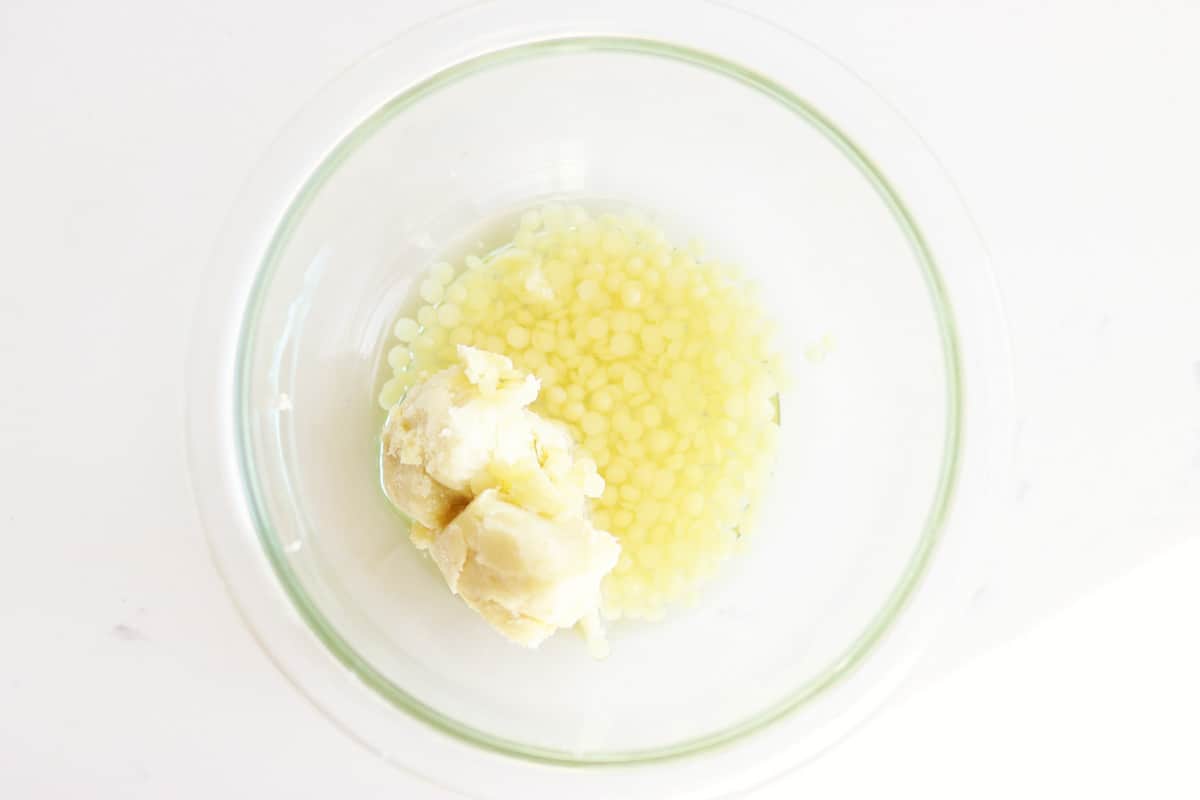
Add Remaining Ingredients – Remove the oil mixture from the stovetop. Add zinc oxide, arrowroot powder and essential oils (if using). Whip well to combine.

Pour – Carefully pour the deodorant mixture into empty tubes. Let the mixture sit undisturbed until it has cooled completely and solidified.

Tips For Success
To Use – Apply to your underarms at the beginning of each day, or as needed.
To Store – Homemade deodorant will keep at room temperature for a very long time since none of the ingredients are water based.
Variations – Try different combinations of essential oils for scented deodorant. Choose oils that are meant to be used in skincare to avoid irritating your skin.
You can also leave the essential oils out for a scent free deodorant.
Substitutions – Mango butter or cocoa butter can be used in place of the shea butter in this recipe.
Almond or jojoba oil can be substituted for the coconut oil.

More natural skincare recipes on the blog:
If you liked this post, I think you’ll really enjoy these other natural DIY toiletries on the blog!
- Homemade Beeswax Body Butter
- Beeswax Lip Balm Recipe
- Homemade Lavender Lotion
- DIY Roll On Lip Gloss
- Easy Essential Oil Perfume Spray
I hope you love this recipe for natural DIY deodorant without baking soda! If you make it, I’d love for you to come back and leave a comment and rating so that I know how you like it!
Pin these steps to try later. Tag @athomeontheprairie on Instagram to share what you’ve made with us!

Homemade Deodorant Without Baking Soda
This homemade natural deodorant without baking soda is a more gentle option that is a great choice for those with sensitive skin. This recipe contains zinc oxide making it super effective against body odor!
Ingredients
- 2 Tablespoons unrefined shea butter
- 2 Tablespoons beeswax pellets
- 2 Tablespoons fractionated coconut oil
- 1-1/2 Tablespoons zinc oxide
- 1/2 Tablespoons arrowroot powder
- 30 drops essential oils (optional)
Instructions
- Using a double boiler or a glass bowl on top of a pot with a few inches of water in it, heat the coconut oil, shea butter, beeswax and vitamin E (if using) over medium low heat until there are no solid bits left.
- Remove the oil mixture from the stovetop. Add zinc oxide, arrowroot powder and essential oils (if using). Whip well to combine.
- Carefully pour the deodorant mixture into empty tubes. Let the mixture sit undisturbed until it has cooled completely and solidified.
Notes
To Use – Apply to your underarms at the beginning of each day, or as needed.
To Store – Homemade deodorant will keep at room temperature for a very long time since none of the ingredients are water based.
Variations – Try different combinations of essential oils for scented deodorant. Choose oils that are meant to be used in skincare to avoid irritating your skin.
You can also leave the essential oils out for a scent free deodorant.
Substitutions – Mango butter or cocoa butter can be used in place of the shea butter in this recipe.
Almond or jojoba oil can be substituted for the coconut oil.



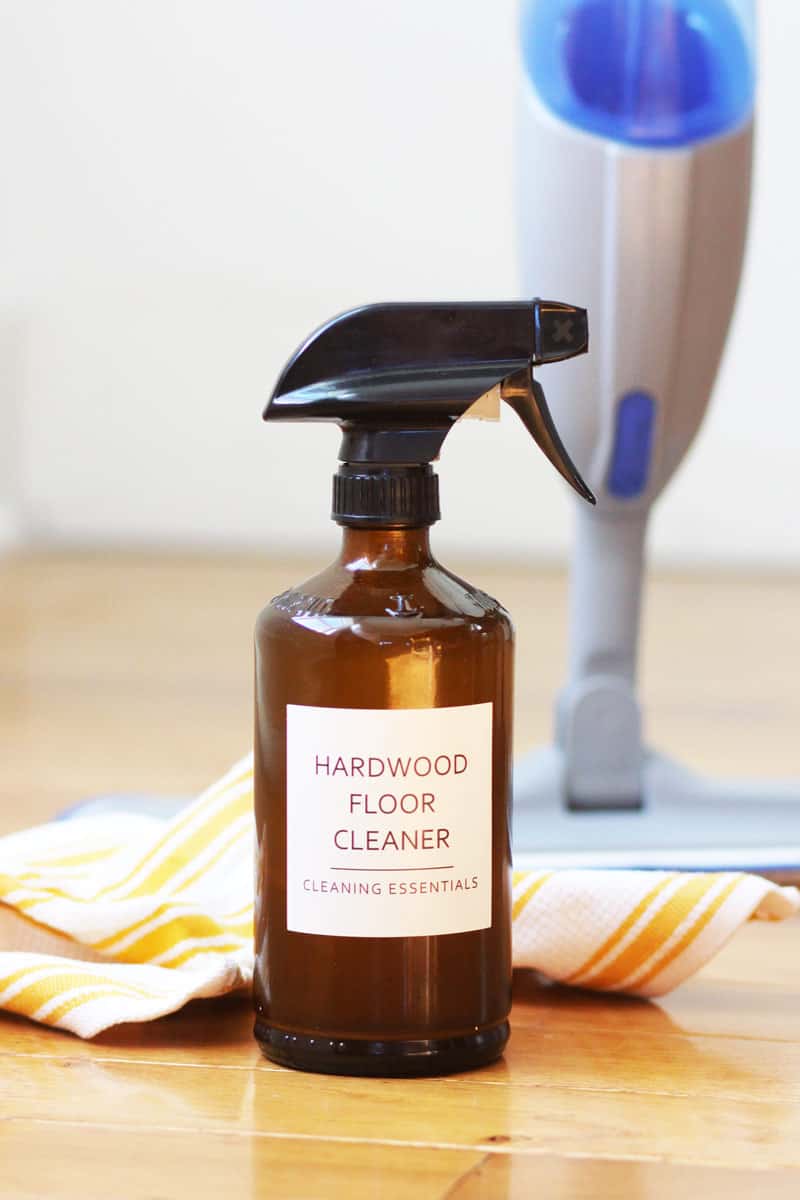
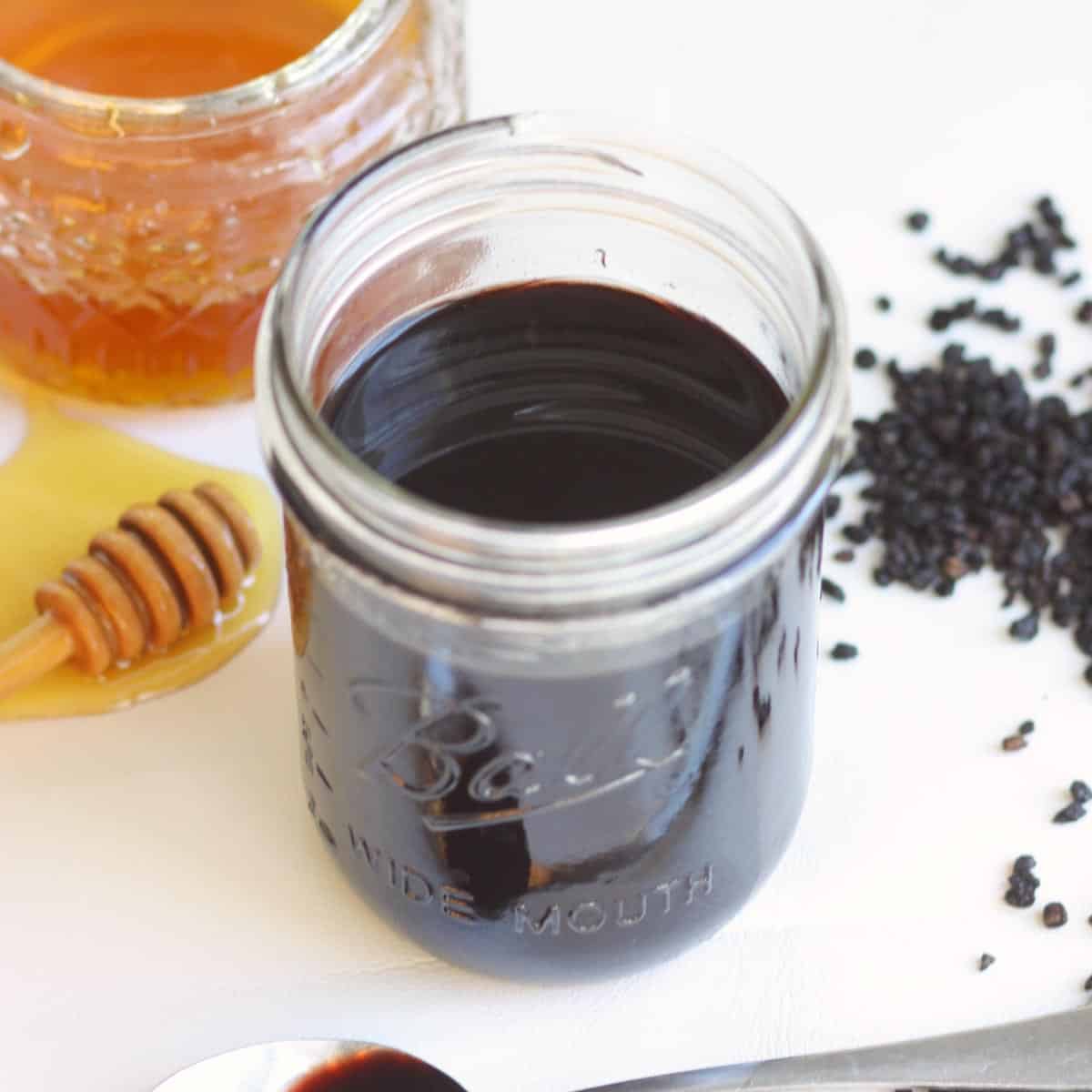

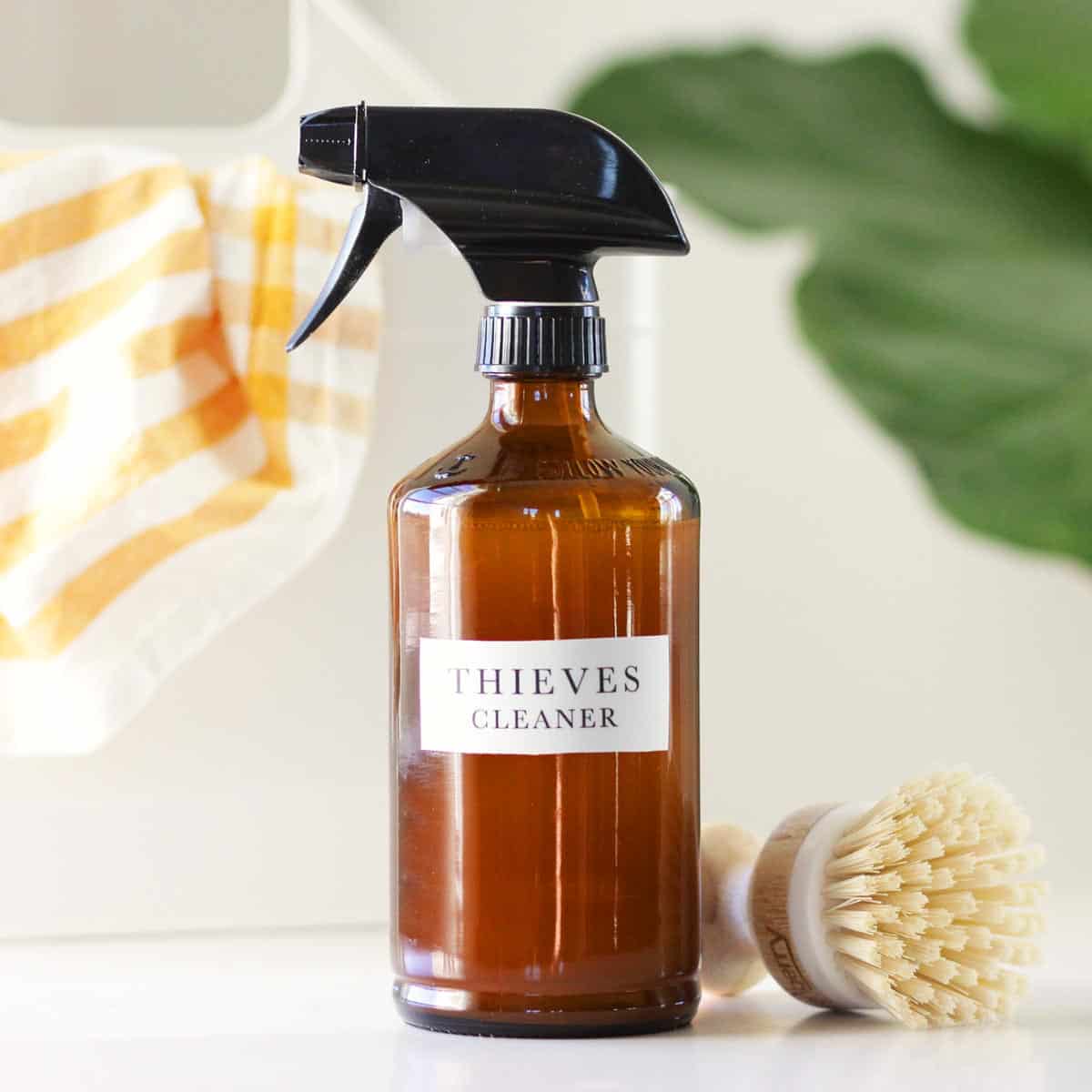
I am out of town for 3 weeks or so, but when I return home I will be giving this recipe a try!! Can’t wait.
Hello,
I don’t have zinc oxide, but zinc gluconate and magnesium hydroxide. Could I use either of them in place of zinc oxide?
Hello,
Never mind… I was able to get the zinc oxide and I will make the deodorant tomorrow. ;0)))
I’m glad you were able to get some zinc oxide!
I just made this deodorant. About to turn in for the evening, I’m looking forward to tomorrow so that I can try out my new deodorant. ;0))) Stay tuned.
Well, well, well….;0) I have used this deodorant yesterday and I just put some on after my shower this morning. So far, so good!! Mine turned out looking chalky, and I used 2 swipes in each underarm. I forgot to add essential oils, but as long as the deodorant is doing the job, I’m ALL for it. I will use it for a week to get my best results. Stay tuned… ;-}
Why did yours turn out chalky?
This is my go to deodorant recipe its the best that I’ve ever found works fantastic lasts the entire say then some I usually just put it in a jar and apply with my fingers but I’m gonna try a deodorant tube next time I don’t mind putting it on with my fingers though
I’m so glad to hear that Jenny!